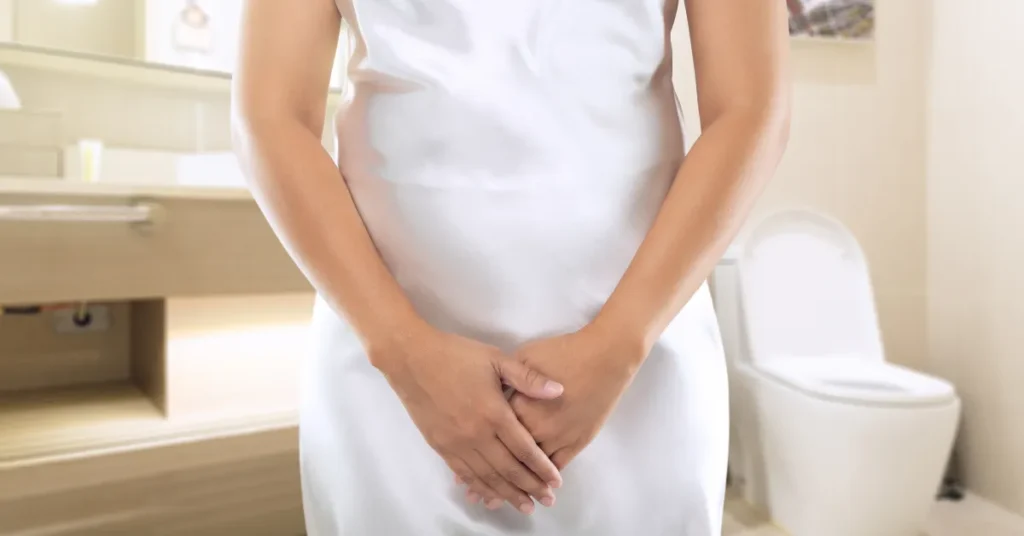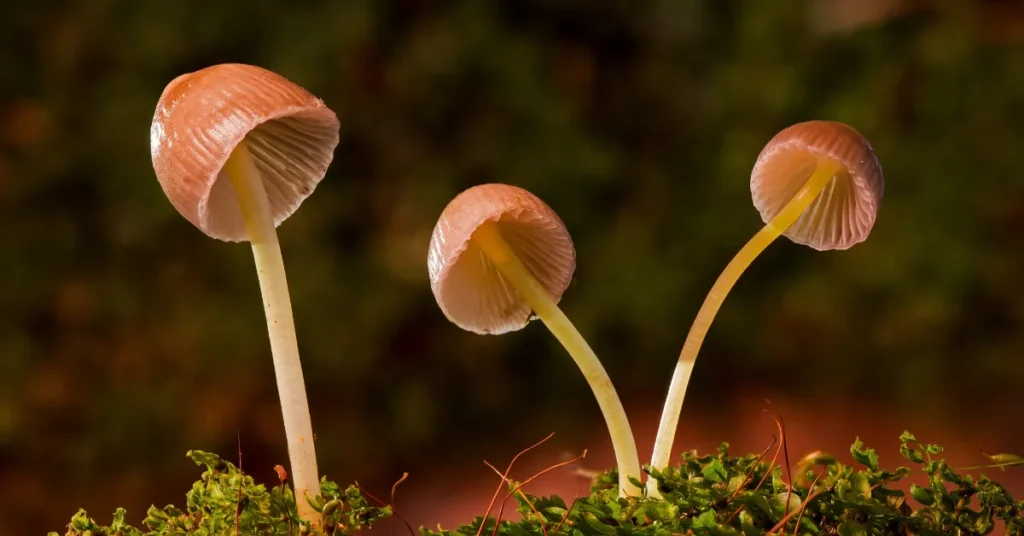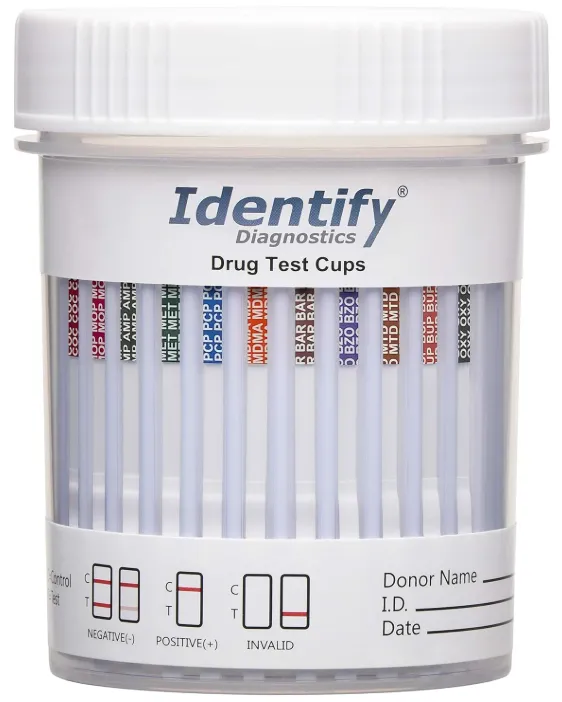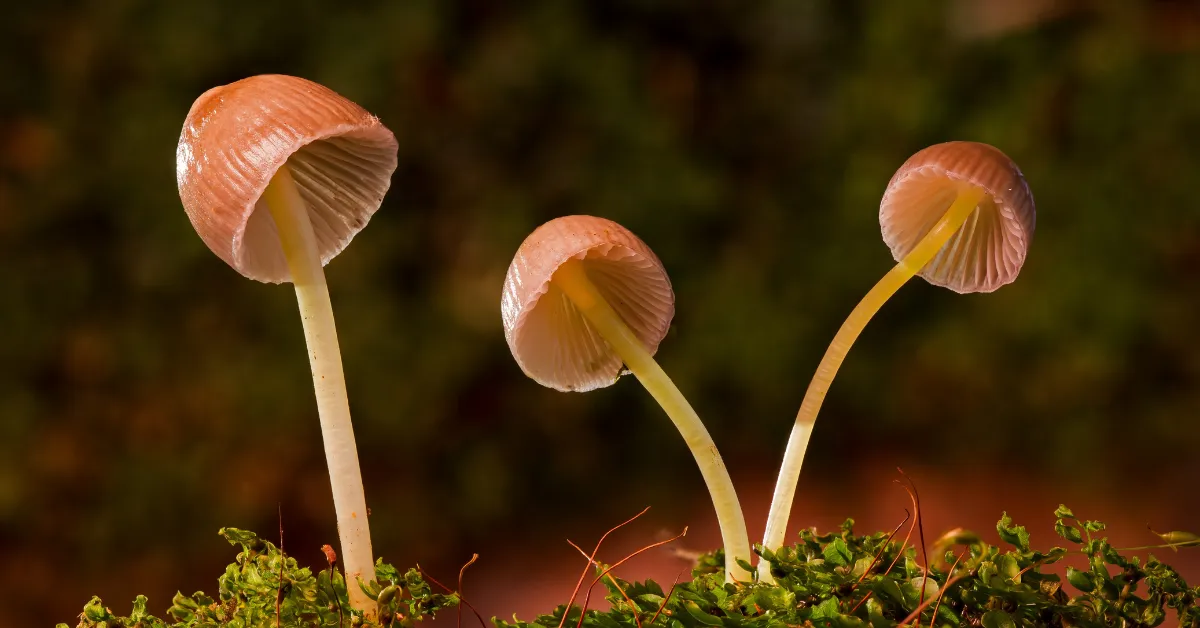Do Shrooms Show Up on a Urine Test?
Do Shrooms Show Up on a Urine Test? Magic mushrooms are a type of fungi that contain the psychoactive compounds psilocybin and psilocin. They are used for many different reasons, including recreational use, spiritual practices, and medicinal use. While magic mushrooms are unlikely to show up on standard drug tests, specialized tests can detect their presence under certain circumstances. Here’s a detailed look at how magic mushrooms interact with drug testing methods.
Magic mushrooms, commonly known as “shrooms,” contain the psychoactive compound psilocybin, which has gained significant attention both for its recreational use and potential therapeutic applications. One of the most frequently asked questions about psilocybin mushrooms is whether they can be detected in drug tests, particularly urine tests. This article provides a comprehensive overview of how psilocybin interacts with various drug testing methods and what you need to know about detection windows.
The Short Answer
Most standard drug tests do not detect psilocybin mushrooms. The typical 5-panel, 8-panel, 10-panel, and 12-panel urine tests used by employers and law enforcement agencies are not designed to screen for psilocybin or its metabolites. However, specialized hallucinogen tests do exist and can detect magic mushroom use, though they are more expensive and less commonly used.
Urine drug tests
The Substance Abuse and Mental Health Services Administration (SAMHSA) note that urine tests are in common use and screen for five categories of drugs, including:
- cannabis
- cocaine
- amphetamines
- opiates
- phencyclidine, or PCP
People often refer to this as the five-panel test.
Other screenings may include more panels, which involves testing for categories such as:
- barbituates
- alcohol
- benzodiazepines
- MDMA
- propoxyphene
- methadone
- methaqualone
Hair follicle drug tests
Some tests can check for compounds, such as hallucinogens, over a more extended time.
For example, hair follicle testing could detect these compounds for as long as 90 days. However, these screenings have a higher cost and may not be as common as urine tests. SAMHSA note that federally-regulated programs currently only collect and test urine.

Factors That Affect Psilocybin Detection
- Dose Taken. The larger the dose, the more psilocybin and psilocin your body processes, potentially increasing the chance of detection if a test is designed to look for it.
- Frequency of Use. Frequent use may result in slightly longer detection windows since residual metabolites might take more time to clear from the system fully.
- Individual Metabolism. If you have a faster metabolism than average, your body processes substances like psilocin more quickly. This reduces the likelihood of detection.
That said, even if psilocybin is detectable, its short detection window (usually within 24 hours) significantly reduces the chances of it being detected in standard workplace or probationary drug tests. Specialized tests would have to be administered shortly after use to identify psilocybin or psilocin. And this is rarely the case.
How long do shrooms stay in the system?
After ingesting hallucinogenic mushrooms, the body breaks them down into their active components, such as psilocybin and its active form, psilocin. These compounds act on the brain to produce changes in perception and behavior.

However, the entire process is relatively quick:
- Changes in emotion, perception, and consciousness can start in as little as 20–30 minutes after ingestion. The changes can last for several hours, depending on numerous factors such as the dose and the individual.
- At the same time, the body begins processing the compounds quickly. The kidneys excrete the compounds, which then leave the body in the urine.
- The half-life of a drug is how long it takes the body to break down or excrete half the total amount a person ingests. With this in mind, the half-life of psilocin is 50 minutes.
- About 66% of the compounds get excreted from the body within 3 hours.
- After 24 hours, the compounds are no longer detectable in the urine.
Several individual factors may affect these timings, such as:
- Dosage: A higher dosage may remain in the body for longer as it takes more time to break down.
- Potency of the shrooms: More potent mushrooms may have more active compounds, making them last longer in the body.
- Type of mushrooms: There are a variety of hallucinogenic mushrooms, each with its own composition that may affect how long it stays in the body.
- Personal tolerance level: Taking some compounds regularly or in larger dosages to feel the same effects may increase the time they take to leave a person’s system.
- Preparation method and form: How a person prepares shrooms, for example, dried or in tea, may affect their potency and subsequent excretion time.
Any food or drink taken with the mushrooms: Factors that affect digestion, such as eating shrooms with other foods or on an empty stomach, may affect the time it takes for them to leave the body. - Metabolism: An individual’s metabolism may affect how quickly the compounds leave the body. Several other factors may influence a person’s metabolism, such as age and body composition.
- Disorders in the kidney: A kidney with reduced function may take more time to metabolize and excrete these compounds.
What are the Effects of Magic Mushrooms?
Shrooms can be eaten fresh, cooked, or brewed into tea. The effects you experience will depend on the potency of the mushrooms and the dose you are taking. However, it is essential to note that no amount of shrooms is considered safe.
Eating magic mushrooms can cause a pleasurable experience for some and a scary one for others. If you have any mental health conditions, taking shrooms can worsen your symptoms and put you at risk of negative side effects.
The effects of magic mushrooms may include:[2]
- Euphoria and an overall sense of wellbeing
- Changes in consciousness, mood, thought, and perception
- Dilated pupils
- Visual and auditory hallucinations
- Stomach upset and nausea
- Vomiting
- Headaches
- Fast or irregular heartbeat
- Increased body temperature
- Fast breathing
- Facial flushes, sweating, and chills
- Panic or paranoia
- Psychosis
- Scary hallucinations or negative emotions
How Long Do Shrooms Stay in Your System?
There is no way to predict how long shrooms stay in your system because it varies from person to person. Certain factors like how much shrooms you took, the potency of the mushrooms, and your overall health can play a role in how long it takes your body to eliminate the substance.
Identify Diagnostics Drug Test Cups | 5 Pack | 12 Panel CLIA Waived Instant Urine Drug Test Kit for AMP,BAR,BUP,BZO,COC,MDMA,MET,MOP|OPI,MTD,OXY,PCP,THC.
- Over 99% accuracy detecting drug metabolites in human urine according to the listed cut-off levels.
- IMPORTANT: Wait 5 minutes to read drug test kit results. Built-in urine temperature strip included.

Factors that affect how long magic mushrooms stay in your system include:
- How much you consume
- The species of mushroom
- How often you consume them
- How fast your metabolism is
- Age and weight
- Overall health
- Whether you have eaten or drank water
When you take shrooms, your gastrointestinal tract absorbs the psilocybin and converts it to psilocin within 10 to 30 minutes.[3] Psilocin is usually cleared from your system after 5 hours, however, the leftover psilocybin can take about 15 hours to be eliminated from your body.
While the length of time that magic mushrooms stay in your system is different for everyone, it is usually cleared from a person’s system by 24 hours after consuming the drug.
Understanding Standard Drug Tests
What Standard Tests Look For
The most common urine drug test is the 5-panel test, which typically screens for
- THC (marijuana)
- Cocaine
- PCP (phencyclidine)
- Amphetamines
- Opioids
Extended panels may include additional substances like
- Barbiturates
- Benzodiazepines
- MDMA
- Alcohol
- Methadone
Notably absent from these standard panels is psilocybin, which means routine workplace or legal drug screenings will not detect magic mushroom use (Medical News Today).
Specialized Hallucinogen Testing
While standard tests don’t screen for psilocybin, specialized hallucinogen tests do exist. These tests can detect:
- Psilocybin and psilocin (from magic mushrooms)
- LSD
- Mescaline
- Peyote
These specialized tests are significantly more expensive and are typically only used when there’s specific suspicion of hallucinogen use or in specialized circumstances (Healthline).
Detection Windows for Different Test Types
Urine Tests
- Detection window: Up to 24 hours after ingestion
- Peak detection: 6-24 hours post-consumption
- Reliability: High for detecting recent use
Research shows that approximately 66% of psilocybin compounds are excreted within the first 3 hours after ingestion, with the remainder cleared within 24 hours in most cases Medical News Today.
Blood Tests
- Detection window: Up to 15 hours after ingestion
- Usage: Rarely used due to the short detection window
- Application: Primarily for detecting very recent use
Hair Tests
- Detection window: Up to 90 days
- Cost: Significantly more expensive than urine tests
- Usage: Uncommon due to cost and complexity
Saliva Tests
- Detection capability: Generally ineffective for psilocybin
- Reason: Mushrooms are metabolized too quickly to be reliably detected in saliva
How the Body Processes Psilocybin
Understanding how your body metabolizes psilocybin helps explain the detection windows:
- Absorption: Psilocybin is absorbed in the gastrointestinal tract within 10-30 minutes of ingestion
- Conversion: The body converts psilocybin to psilocin, the active compound that produces psychoactive effects
- Metabolism: Psilocin has a half-life of 1.8 hours, while psilocybin has a half-life of 3 hours
- Excretion: About 75% of psilocin is excreted within 3.5 hours, with psilocybin taking up to 6 hours
- Complete clearance: After 24 hours, compounds are typically undetectable in urine
Factors Affecting Detection Time
Several factors can influence how long psilocybin remains detectable in your system:
Dosage and Potency
- Higher doses may remain detectable longer
- More potent mushroom varieties contain higher concentrations of active compounds
Individual Factors
- Metabolism rate: Faster metabolism leads to quicker clearance
- Age: Older individuals may process substances more slowly
- Body composition: Body fat percentage and overall health status
- Kidney function: Impaired kidney function can extend detection time
Usage Patterns
- Frequency of use: Regular users may have longer detection windows
- Tolerance levels: Higher tolerance may affect metabolism
Preparation and Consumption
- Form consumed: Dried mushrooms vs. tea vs. other preparations
- Food intake: Consuming mushrooms with food may affect absorption and metabolism
Special Considerations and Risks
Contamination Concerns
One important risk factor is the possibility of mushroom contamination. Unscrupulous vendors have been known to contaminate regular mushrooms with other detectable drugs like PCP. If this occurs, standard drug tests could detect these adulterants even if they don’t test for psilocybin itself Healthline.
Legal Implications
While detection is one concern, it’s crucial to understand that psilocybin mushrooms remain illegal in most jurisdictions. Even if they don’t show up on standard drug tests, possession and use can still result in legal consequences.
Workplace and Legal Testing
Employment Screening
Most employers use standard 5-panel or extended panel tests that don’t include psilocybin screening. However, some specialized positions or employers in sensitive industries might use more comprehensive testing.
Legal System
Law enforcement agencies typically use standard panels, but specialized testing may be ordered in specific cases, particularly if there’s suspicion of hallucinogen use or in cases involving apparent impairment.
Federal Regulations
The Substance Abuse and Mental Health Services Administration (SAMHSA) notes that federally regulated programs currently only collect and test urine, and standard federal testing protocols don’t include psilocybin screening.
How Long Do Psilocybin Mushrooms Stay in Your Urine?
Because urine tests are the most common drug test, if you’re wondering does magic mushrooms show up on a drug test, it makes sense to start with this one. According to Cleveland Clinic, urine drug tests are most often used to detect the following substances:
- Alcohol
- Benzodiazepines
- Amphetamines
- Opiates or opioids
- THC (marijuana)
- Cocaine
According to Healthline, the most commonly used urine drug test is a five-panel test, meaning it looks for these five substances: THC; cocaine; PCP, amphetamines; and opioids. While other tests are available that can detect eight, 10, or even 12 substances, standard tests don’t look for mushrooms. While specialized tests are available, they’re expensive and generally wouldn’t get used unless the tester suspects that the person has recently consumed magic mushrooms.
Part of the issue is that psilocybin mushrooms quickly leave our bodies, making it hard to detect with standard tests. An entry in Meyler’s Side Effects of Drugs says about two-thirds of psilocybin will be excreted in our urine in the first three hours after use, with the substance only having a half-life of about 50 minutes. Just 24 hours after ingestion, psilocybin won’t be detectable in urine.
Can You Speed Up Elimination?
There are limited ways to accelerate the elimination of psilocybin from your system:
What Might Help
- Hydration: Drinking water may help maintain kidney function and urine flow, but won’t dramatically speed elimination
- Lower doses: Consuming less means less for your body to process
What Doesn’t Work
- Detox products: No scientific evidence supports commercial detox products for psilocybin
- Exercise: While beneficial for overall health, won’t significantly impact psilocybin elimination
- Dietary changes: No specific foods or supplements have been proven to accelerate clearance
The Bottom Line
Magic mushrooms typically don’t show up on standard urine drug tests, which are the most common type of workplace and legal screening. However, specialized tests can detect psilocybin use within a 24-hour window for urine tests and up to 90 days for hair tests.
The body processes psilocybin relatively quickly, with most compounds eliminated within 24 hours. While this makes detection less likely with routine testing, it’s important to remember that:
- Specialized tests do exist and can detect use
- Individual factors can affect detection times
- Legal status remains unchanged regardless of detectability
- Contamination with other substances is a potential risk
If you’re concerned about drug testing, the safest approach is to avoid use entirely. For those struggling with substance use, resources like the SAMHSA National Helpline (1-800-662-4357) provide confidential, free treatment referral services.
Medical and Research Context
It’s worth noting that psilocybin is currently being researched for various therapeutic applications, including treatment for depression, PTSD, and addiction. As research continues and potentially leads to approved medical uses, testing protocols and legal frameworks may evolve.
The information in this article is for educational purposes only and should not be considered medical or legal advice. Always consult with healthcare providers and legal professionals for guidance specific to your situation.
Conclusion
So, do shrooms show up on drug tests? In most cases, the answer is no.
As mentioned, the body metabolizes psilocybin, the active compound in magic mushrooms, usually within 24 hours. Factors like the dose taken, frequency of use, and individual metabolism can slightly influence detectability. Still, the short detection window makes it unlikely for psilocybin to appear unless a specialized test is conducted soon after use.
While shrooms are indeed gaining popularity, it’s essential to consider their legal and personal implications. Laws around psilocybin vary, with some states moving toward decriminalization or therapeutic legalization. However, in most areas, psilocybin remains a controlled substance, so knowing your local regulations is essential.
Understanding details like how long it takes for shrooms to kick in and how drug tests work can help you navigate these matters with confidence. If you’re concerned about psilocybin use, drug testing, or its impact on your life, reach out to Atlas Treatment Center for guidance and support. Get in touch today!






